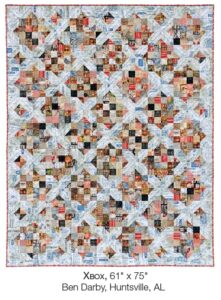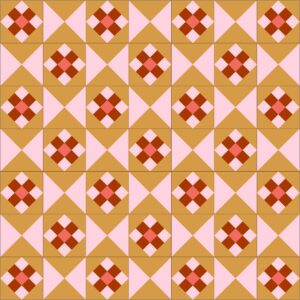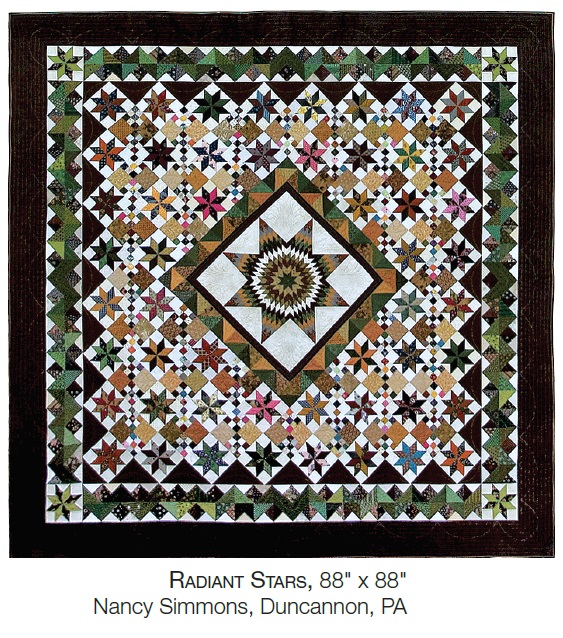The AQS Quilt 2018 project for October is Two-Block!
At the beginning of the year, you made a list of all the quilt making techniques you’d like to try in 2018 and put them in a jar. Then, you chose your own personal color of the year. You are ready!
If you missed last month’s project, check it out. We created One-Patch quilts.
Our style for this month is Two-Block Design.
Two-Block Design quilts use two different blocks to create designs secondary to the blocks individually. These quilts can trick the eye into focusing on one area, or into seeing the quilt as a repeating pattern that continues on beyond its bound boundaries. Often, simple blocks are all that’s needed to create the effect so long as a few principles are applied.
The first principle is to choose two blocks or either the same grid or of equally divisible grids. There are two-block design quilts that successfully ignore this principle, but using two blocks of the same grid creates the likelihood of points meeting and blocks creating secondary designs.
The second principle is to carry over some element of one block over to the other, most often through color. Continuity promotes ease of eye movement from one block to the next.
The third principle is to play! Turning blocks or alternating values in a block can help create stronger secondary designs. Don’t be scared of using variations on your own blocks in the same quilt.
Below are examples of Two-Block quilts from finalists in the Catalog of Show Quilts and original designs to inspire you:

Here, Ben Darby uses a 16-patch, a scrappy X-block—two simple blocks—and finishes out the repeat of the shapes created by the two blocks to create an overall design that lets the eye take it in as a whole and creates a sense of resolution.

Two-Block Design quilts can also create the illusion of an intricate setting like this quilt, which could trick you into thinking it is set on-point.

Hourglass blocks, also known as quarter square triangles, make versatile second blocks that are easy to make while creating a dramatic effect.


Here’s the same quilt but one with the second block colored to create contrast. In the first quilt, the continuity of the dark purple creates a secondary design that’s echoed out into a pieced border. In the second quilt, contrasting colors reduce the illusion of the secondary design, but does emphasize the differences in the two blocks.

Nancy Simmons uses two-block design as an element of her quilt. Setting eight-point stars and a four-patch variation on point around a center block. Both blocks have equally divisible grids, but Simmons is able to insert a nine-patch into the four-patch, thus creating visual interest. By creating secondary designs between a strong center and a strong pieced border, Simmons creates a lot of sparkle for the eyes to enjoy and pathways for them to follow while looking at all the quilt has to offer.
We’ve shown you some fun Two-block quilts. Browse through blocks, put them together, and see what happens!
Draw your technique from your jar, think about clever ways to play with your color of the year, and start creating.
Next week, we will dive into layouts.
Give us a shout in the comments below letting us know your technique of choice or share with us on our Facebook group AQS Project Parade.
Let’s get started!
Want to catch up on previous month’s projects? Visit Quilt 2018.